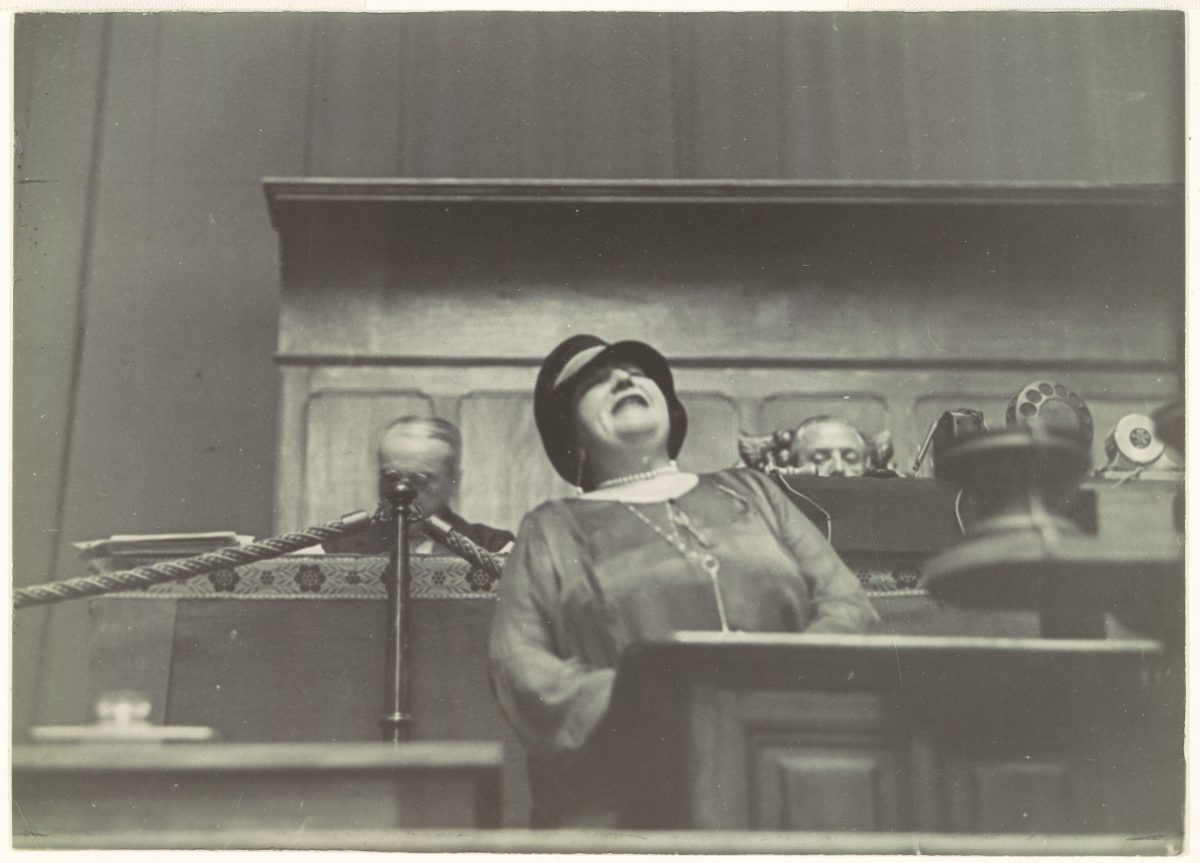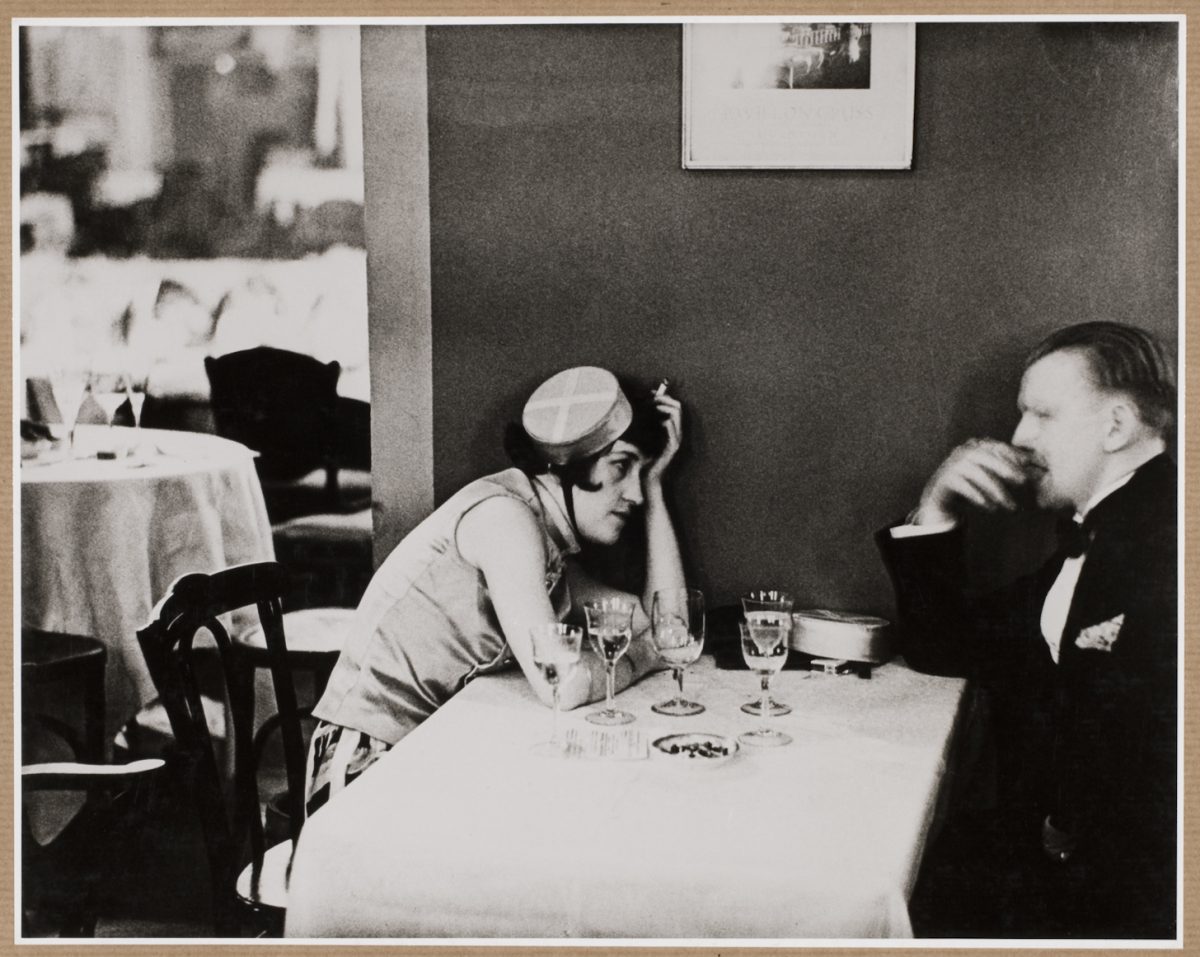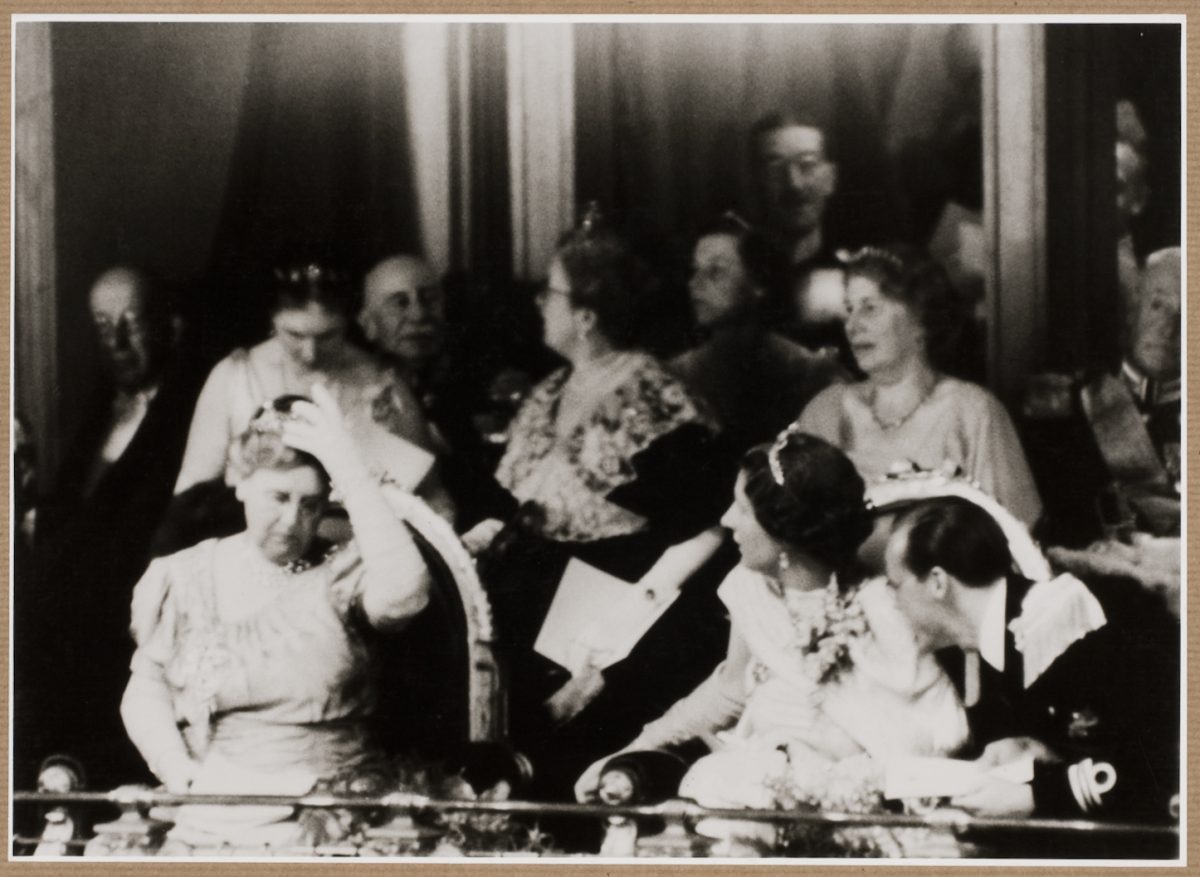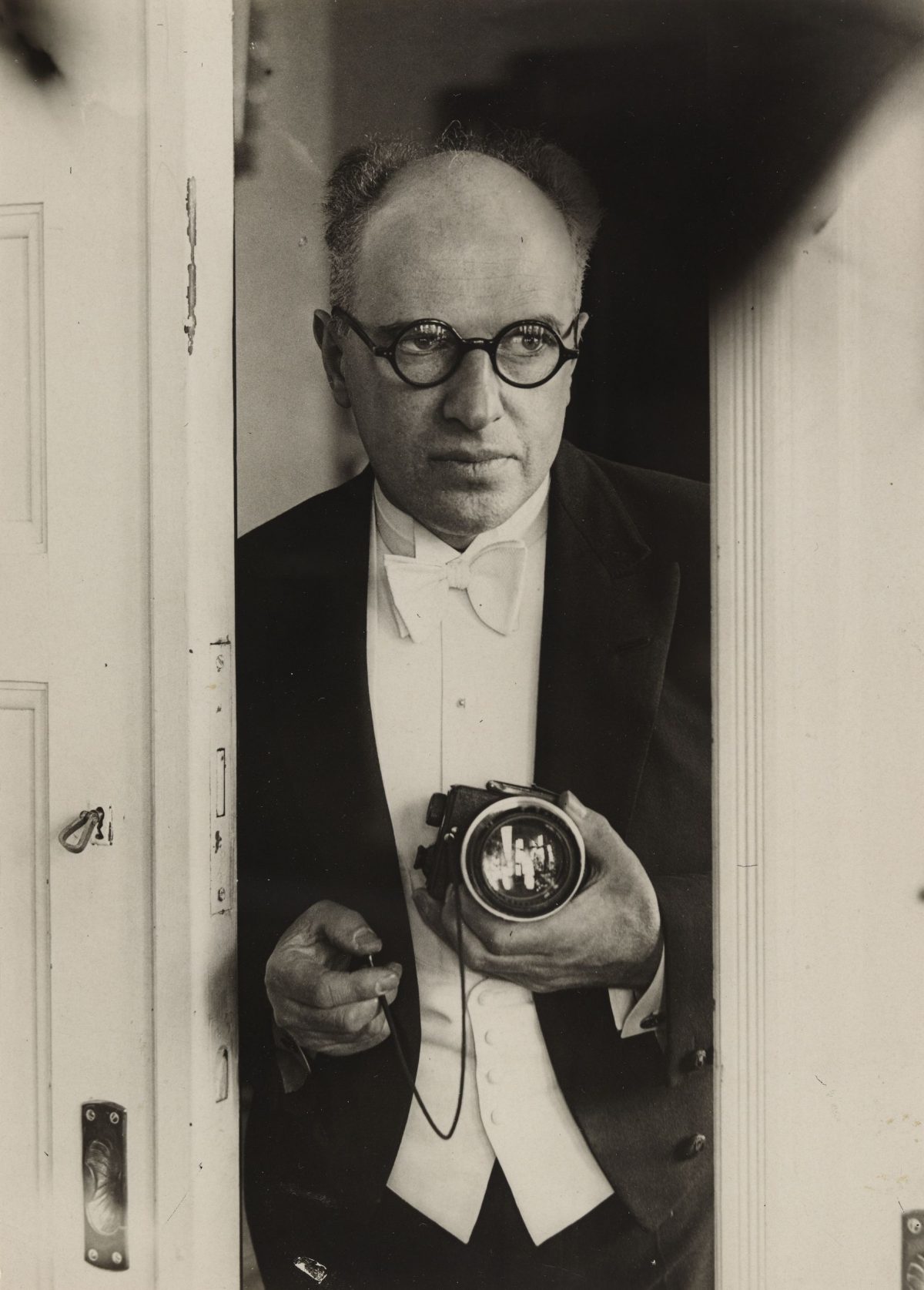Erich Salomon (1886-1944) was 42 when he tried his luck as as a professional photographer. Armed with his Ermanox and Leica cameras, Salomon’s moneyed background and ability to take great shots of the rich, notorious and connected surreptitiously and in poor light earned him the nickname ‘The King of the Indiscreet’. In 1931, Salomon published Berühmte Zeitgenossen in unbewachte Augenblicken (Famous Contemporaries in Unguarded Moments).
The phrase “candid camera” was first coined in 1929 to describe Salomon’s idiosyncratic technique of capturing the world’s most powerful political and industrial leaders revealing themselves as ordinary human beings: talking, yawning, and joking. With his 35mm Ermanox camera concealed (sometimes in a hat or suitcase) and his unobtrusive appearance, Salomon was able to cut through the slick facade conveyed by official state portraits, both deflating and humanizing the politicians he photographed. This picture was taken in the Reichskanzlei in Berlin.
– The Met
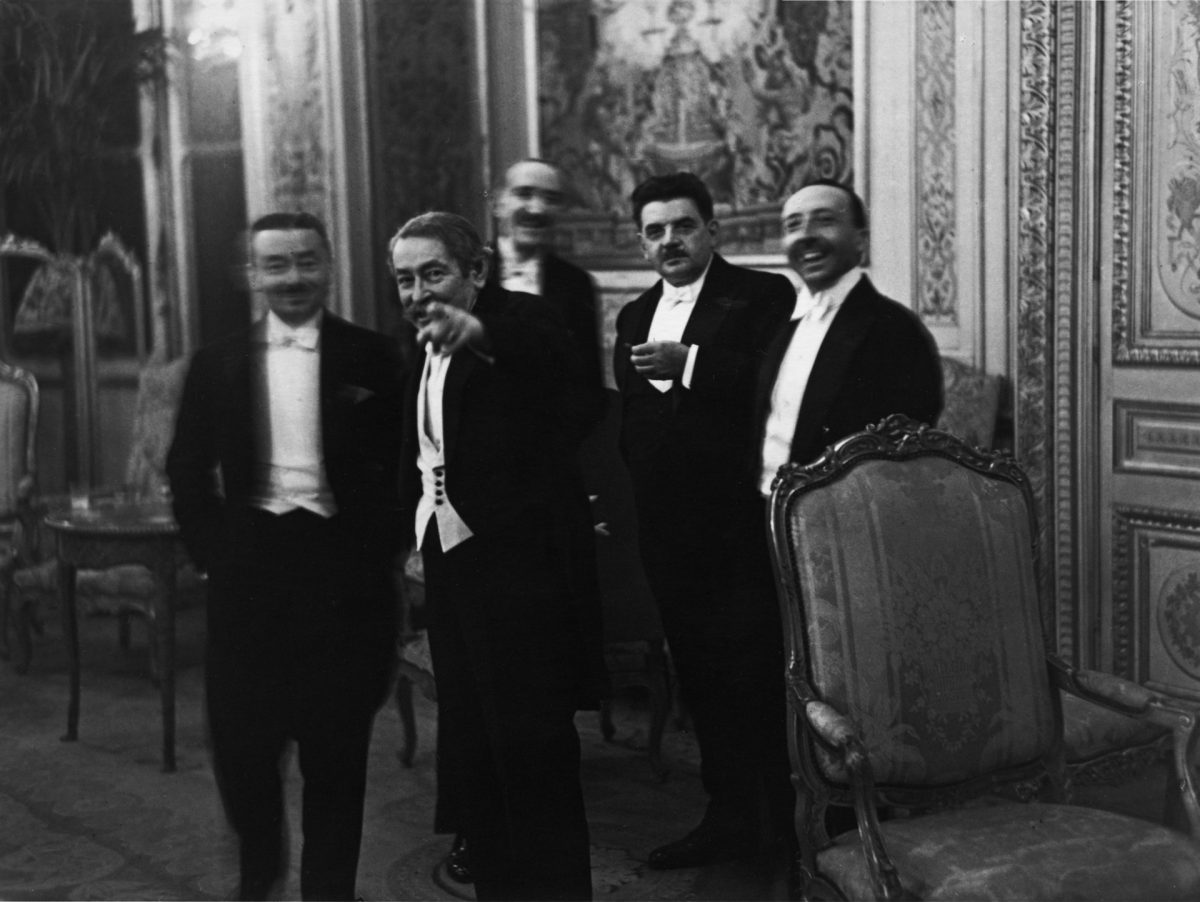
Aristide Briand points to Erich Salomon and exclaims: “Ah! here it is ! the king of the indiscreet! ” Paris, Quai d’Orsay, August 1931.

The public gallery at the Palais des Nations in Geneva, 1928. Erich Salomon / Berlinische Galerie Archives
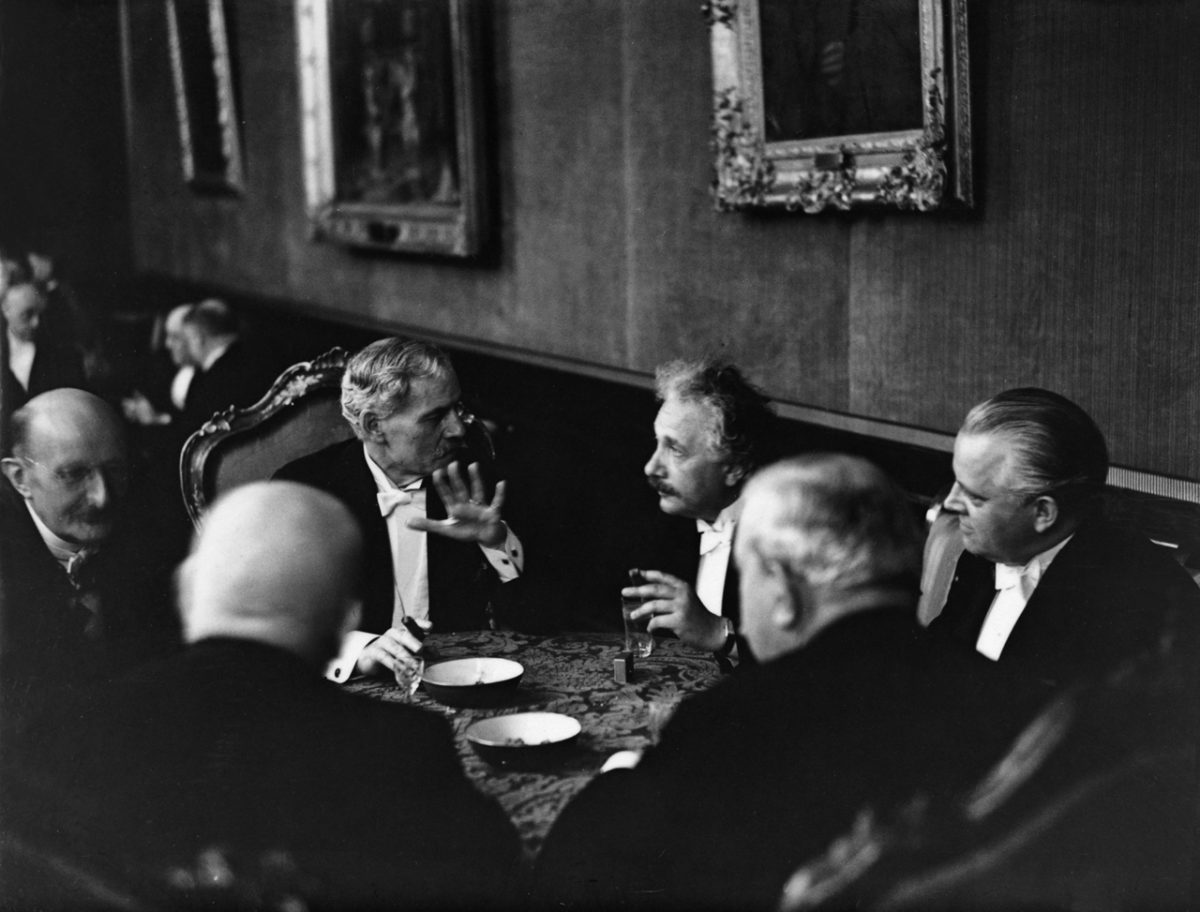
British Prime Minister Ramsay MacDonald chats with Albert Einstein at a reception in Berlin in August 1931. “You have no idea with what affection I am surrounded here, they are not all out to catch the drops of oil my brain sweats out,” Einstein noted.
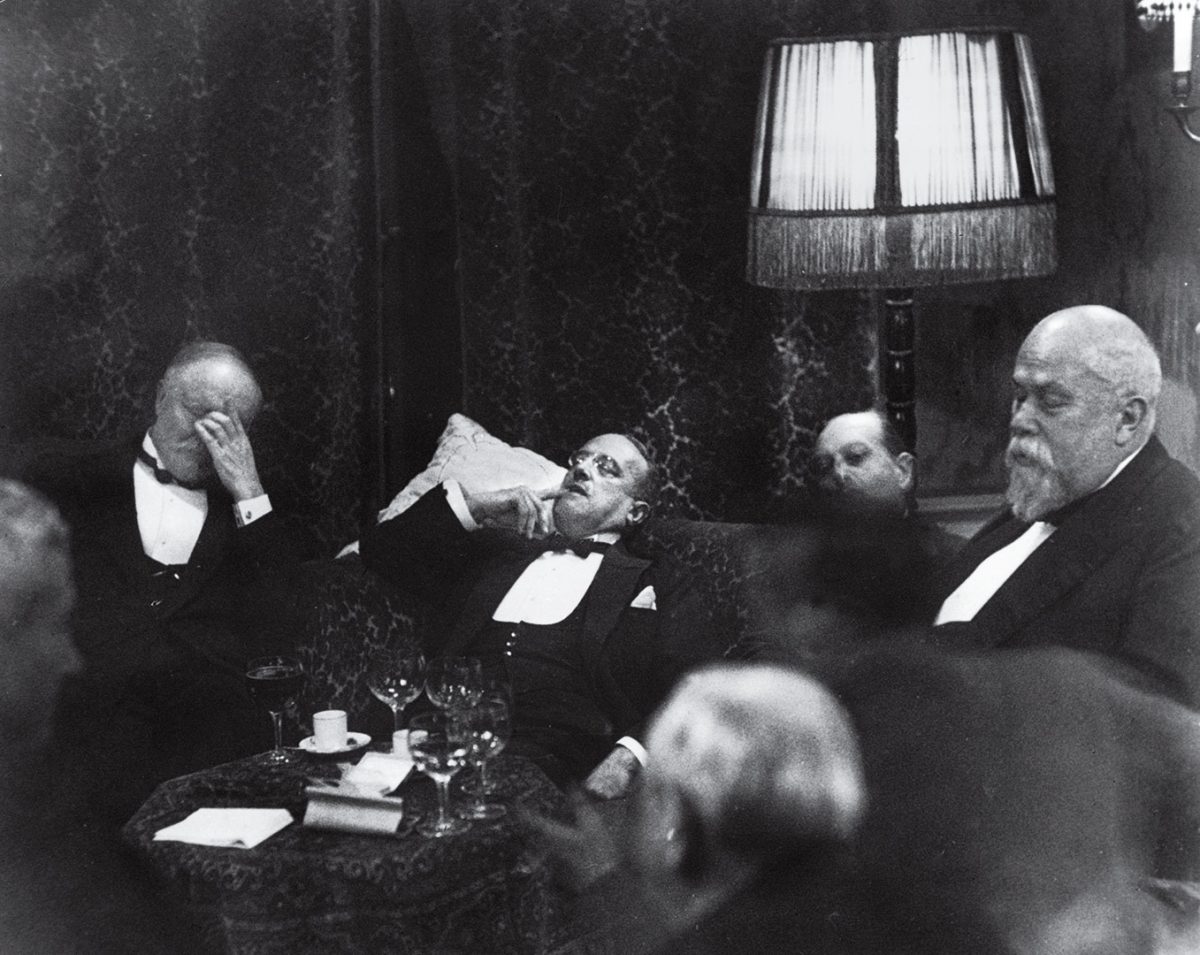
“Taken at two o’clock in the morning in a conference room of The Hague. Louis Loucheur, French Minister of Labor, was holding his hands to his weary eyes; French Premier Andre Tardieu was slumped back on a couch, with eyes almost closed, apparently exhausted. Old Henri Cheron, French Finance Minister, seated in a high-backed chair, was dozing off. Between Cheron and Tardieu sat Germany’s Foreign Minister Dr. Julius Curtius, slowly succumbing to the smooth fingers of Morpheus. The light from a huge lamp in back of the couch was softly reflected on the delegates’ stiff shirtfronts and the high foreheads of Cheron and Loucheur. The meeting of men to decide the existences of millions of subjects! Unaware to these leaders, Dr. Salomon had stolen off to one side to focus his tiny camera and they never knew that their picture had been taken. On looking at the picture, the reader could almost feel that he had been present at this momentous meeting. – “Get That Picture! The Story of the News Cameraman,” A. J. Ezickson
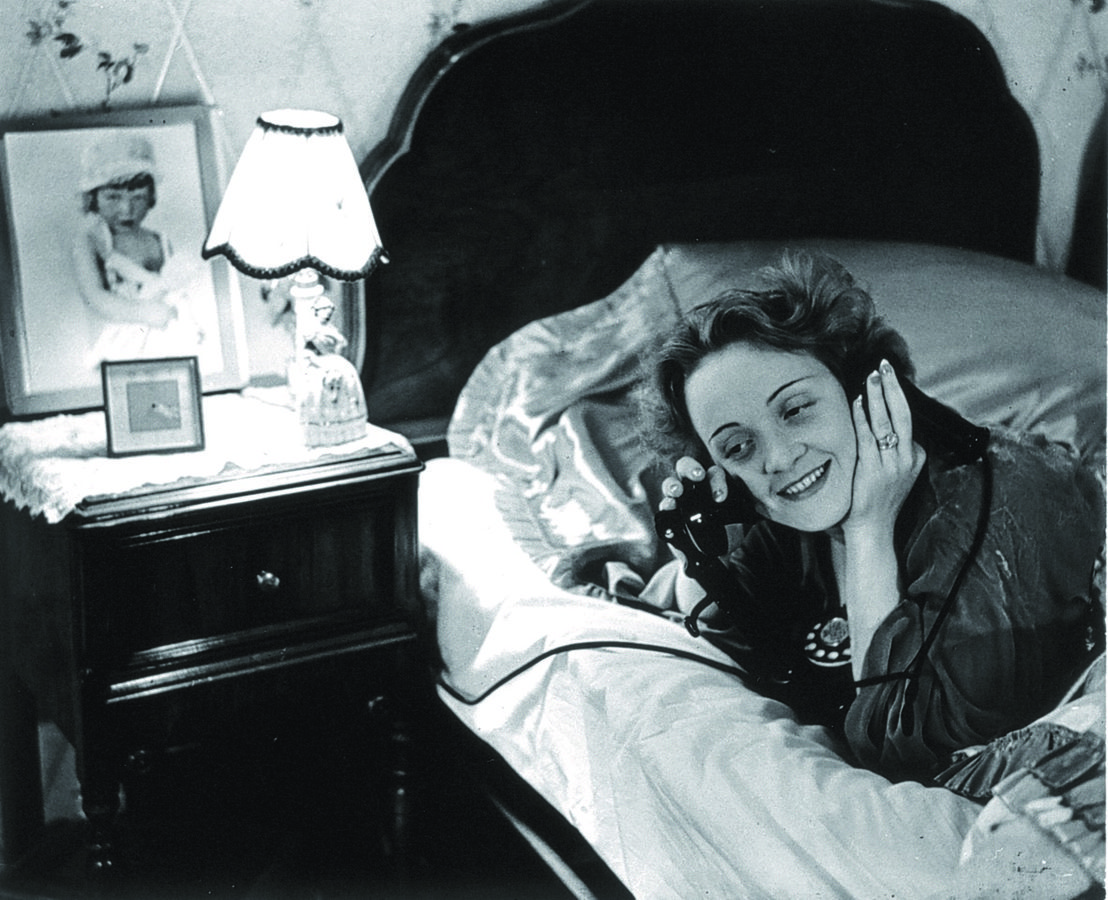
Hollywood, 1930. Shortly after the installation of the transatlantic telephone line, Marlène Dietrich calls her daughter in Berlin.
While working closely with photographers on a project in the Publicity Department of publishing house Ullstein, which printed the illustrated weekly Berliner Illustrirte Zeitung among others, Salomon decided it would be more profitable to become a photographer.
In the late 1920s Salomon taught himself to photograph and sold the pictures he took of his family trips to pay for it. During this time he started documenting big trials by photographing through a hole he made in his hat. His career as a photographer officially began when some of these photographs were published in Berliner Illustrirte Zeitung. In 1929 Salomon secretly (and illegally) photographed inside the British Supreme Court; the images caused a stir when they were published six years later. Over the course of his career, Salomon continued to photograph scenes, people, and locations, often of political significance, at meaningful and unguarded moments…
In 1933 the political situation changed dramatically in Germany when NSDAP became part of the government. During the Salomons’ visit to The Hague that year, where they stayed with the parents of Salomon’s wife, they decided not to return to Berlin. Their oldest son Otto Erich (who later changed his name to Peter Hunter) finished his study in law and moved to London in 1934. After two years of hiding in the Netherlands, Salomon and his family were betrayed in 1944. A few months later he was deported to Westerbork, where he was temporarily united with his wife and youngest son Dirk. On July 7, 1944 they died in Auschwitz…
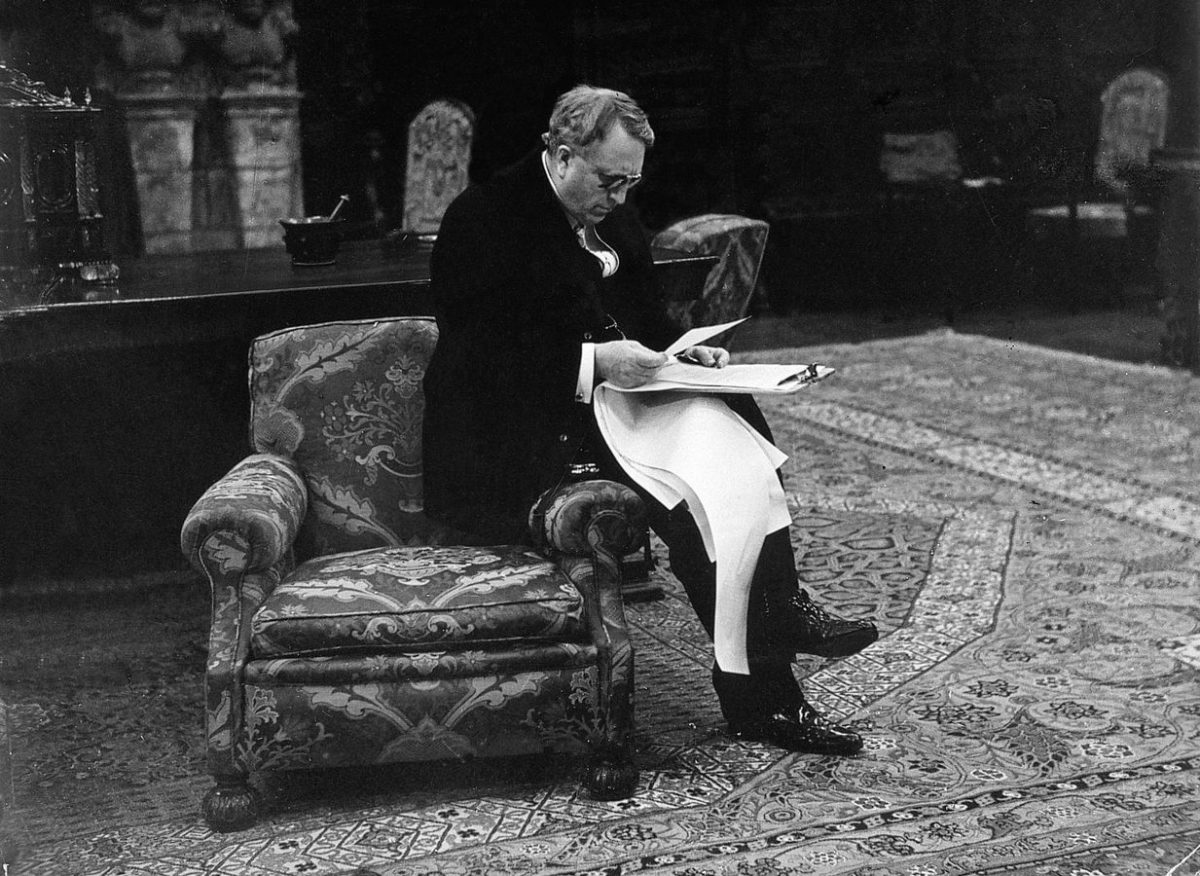
The publisher William Randolph Hearst reading dispatches in his California home, “La Cuesta Encantada”. San Simeon, 1930.
“President Hoover might never have allowed Dr. Erich “Candid Camera” Salomon in the White House if Premier Laval of France had not politely insisted. Like Benito Mussolini, Ramsay MacDonald, and Chancellor Brüning, Pierre Laval has become convinced that Dr. Salomon´s spontaneous snapshots are historic documents to be preserved for posterity…”
– Time, November 1931

Max Schmeling (left) during his training camp before the world heavyweight championship. On the right, Schwarz, the German Consul in New York, June 1932
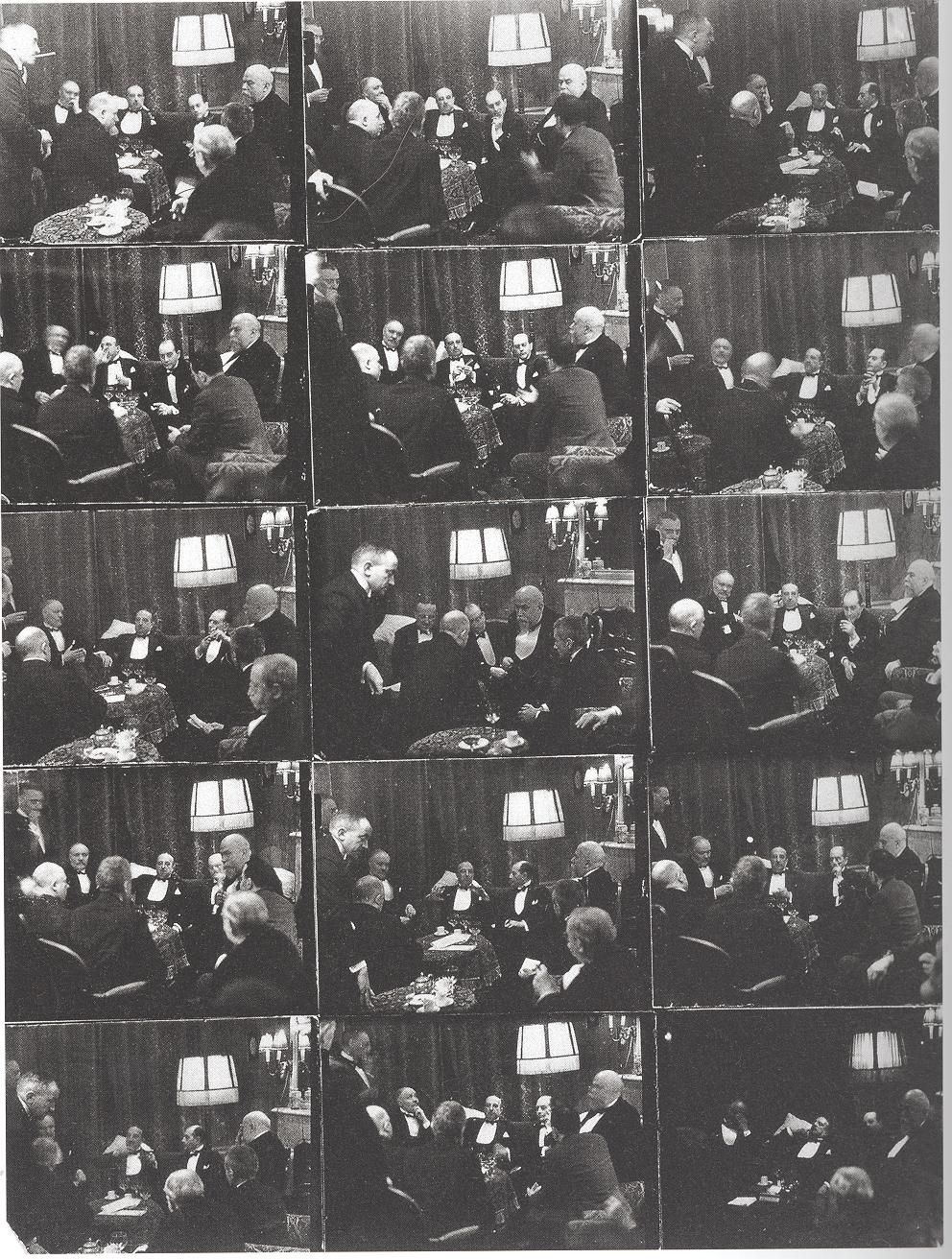
The Hague – Via IconicPhotos
![Meeting of movie stars. On the left side of the console: Carmen Del Rio and Ernst Lubitsch; on the right: Maurice Chevalier, Yvonne Vallée [his wife], Paul Kohner [producer], Vilma Banky and Carl Laemmle. Hollywood, 1930.](https://flashbak.com/wp-content/uploads/2018/05/actor.jpg)
Meeting of movie stars. On the left side of the console: Carmen Del Rio and Ernst Lubitsch; on the right: Maurice Chevalier, Yvonne Vallée [his wife], Paul Kohner [producer], Vilma Banky and Carl Laemmle. Hollywood, 1930.
For more see the Salomon archive at the Berlinische Galerie, Jeu De Paume.
Would you like to support Flashbak?
Please consider making a donation to our site. We don't want to rely on ads to bring you the best of visual culture. You can also support us by signing up to our Mailing List. And you can also follow us on Facebook, Instagram and Twitter. For great art and culture delivered to your door, visit our shop.



